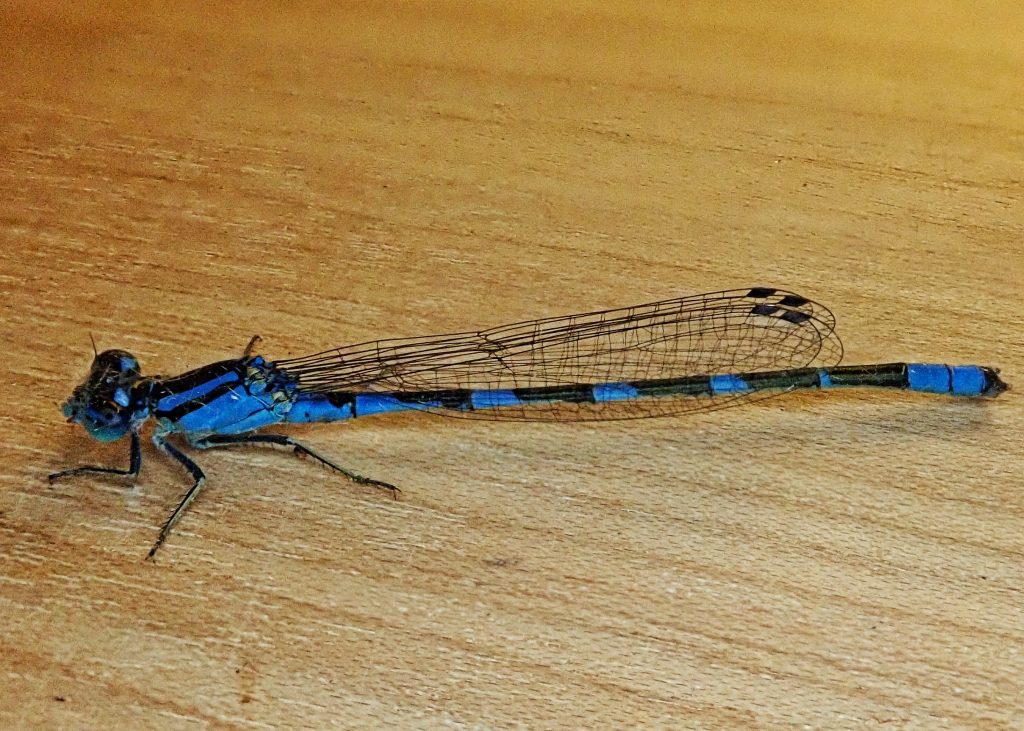
This small (TL 25-35mm) member of the family Coenagrionidae (pond damsels) is a creature of slow or still water areas, large and small, that have emergent vegetation, preferably sedges or grasses. It is often the only bluet species in marshes with heavy cattail growth. It can be found region wide. This can be a wildly abundant species at times in good habitat. They fly from late April into November.
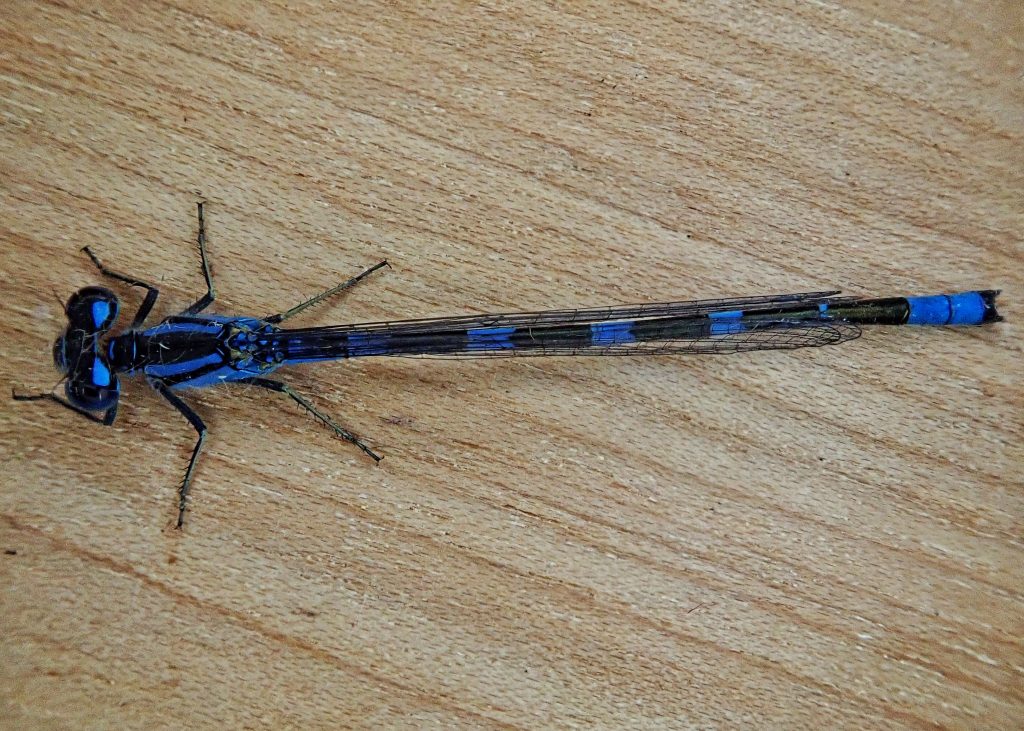
Enallagma carunculatum has the most black on the top of its abdomen of any of the bluets, with S3-7 being at least half black. It has postocular spots which are large, blue, and form a dumbbell shape. Males have blue eyes with a black cap. Females have tan eyes with a brown cap. There is a wide black stripe atop the thorax, and a narrow black stripe on the side of the thorax.
E. anna (River Bluet) also has a lot of black on the dorsal surface of the abdomen. However, in our region, it is only found in the se quadrant of Oregon and s Idaho, and it prefers moving water. The only sure way to differentiate these two species is that the male upper appendages on River Bluets are much longer than the lower appendages, a trait which is often discernible by the naked eye, whereas the Tule Bluets upper appendages are only slightly longer than the lower ones. E. clausum (Alkali Bluet) also has much black on the abdomen, and positive identification requires hand lens examination, but it is only found in our region in ne Washington, se Oregon, and Idaho, and prefers alkaline bodies of water.
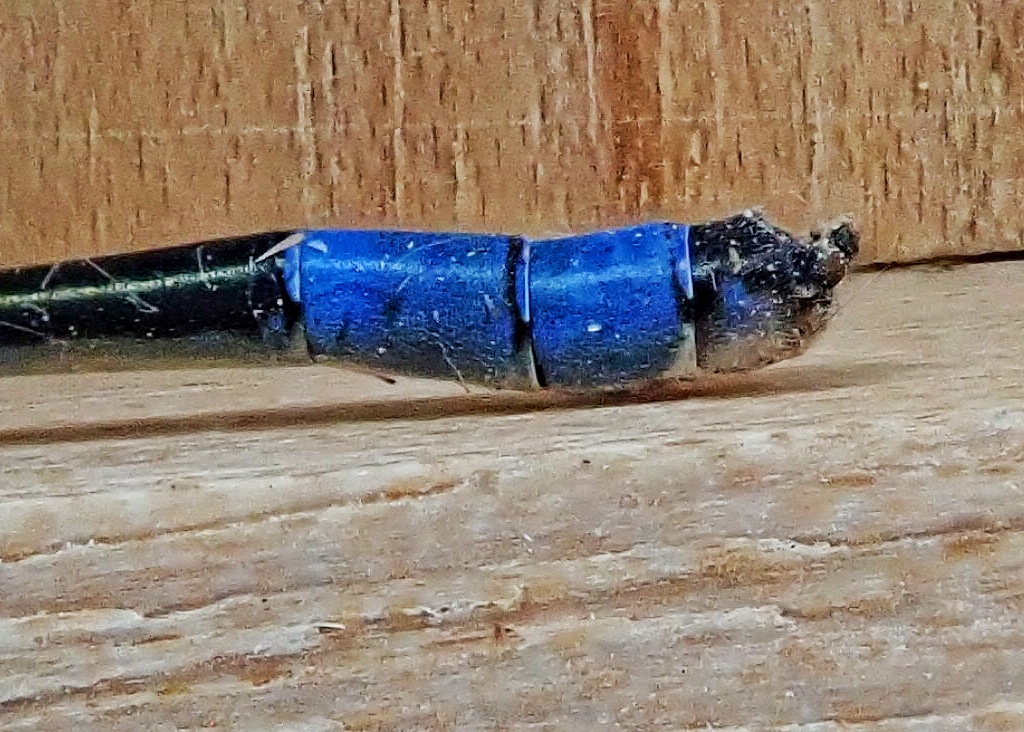
Enallagma comes from the Greek for crosswise, seemingly in reference to the alternating blue and black bands. The species epithet carunculatum refers to a pale tubercle on the male’s upper appendage.
My thanks to Dennis Paulson for confirming the identification of this specimen.
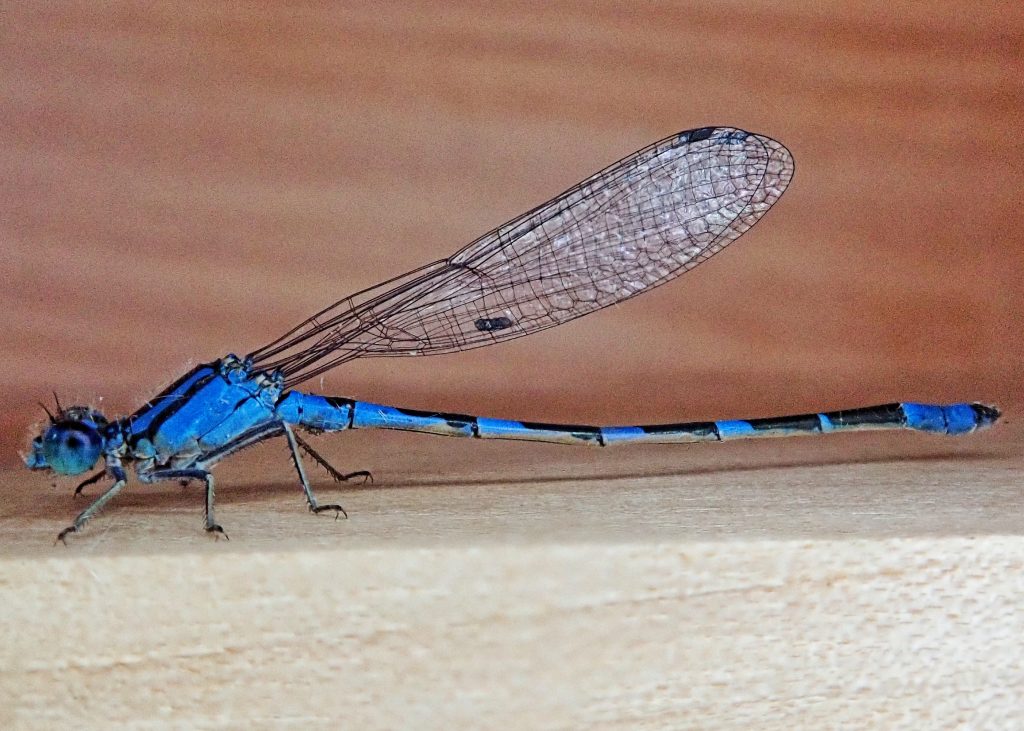
https://en.m.wikipedia.org/wiki/Tule_bluet
https://bugguide.net/node/view/6466/bgimage
https://digitalatlas.cose.isu.edu/bio/insects/drgnfly/coenfam/enca/encafr.htm
Size- TL 25-35mm
Habitat- Slow and still water with abundant emergent vegetation.
Range- Region wide
Eats- Mostly small flying insects
Flight Season- April to November
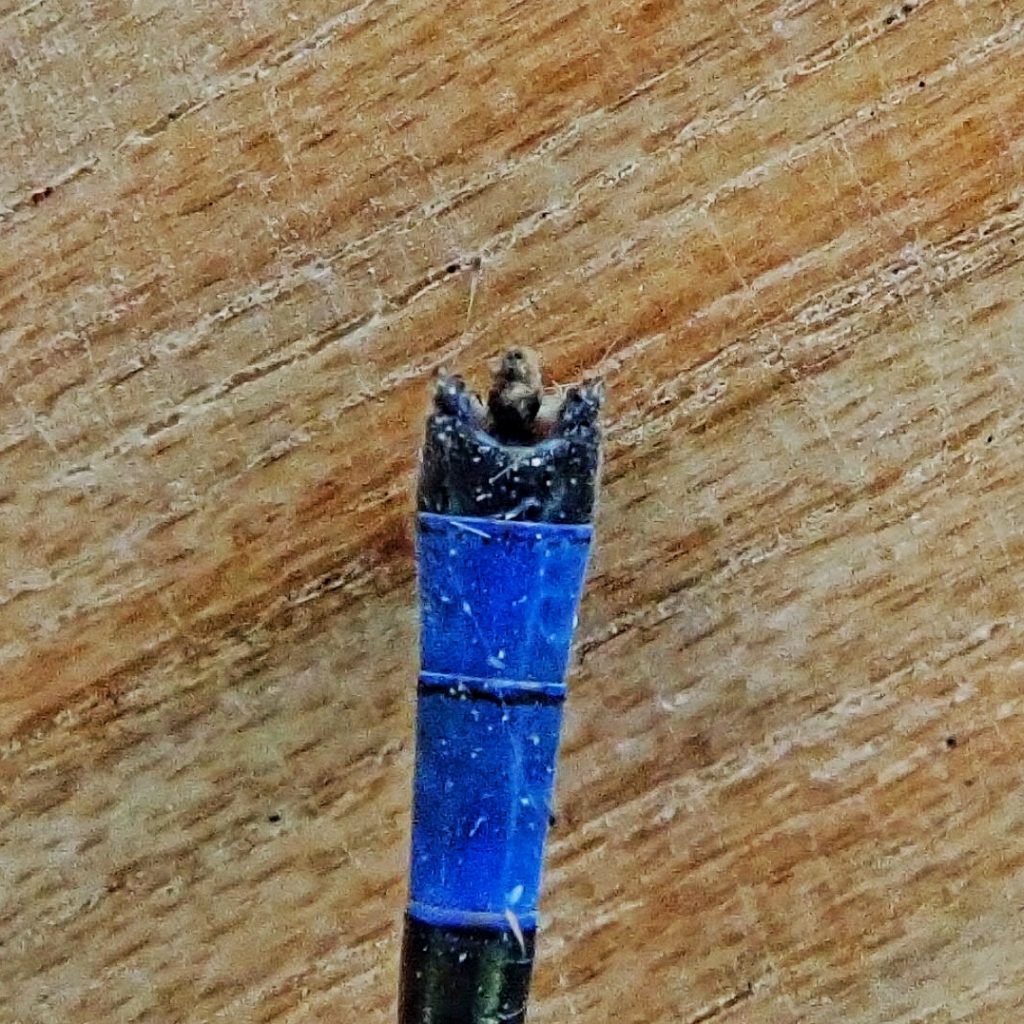
I love these guys! 🙂
Me too!